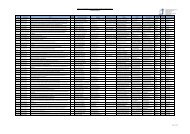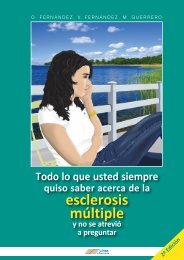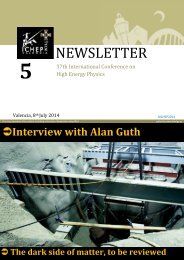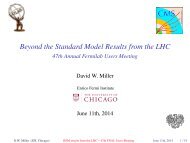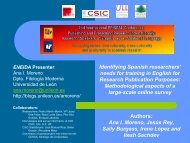PW_mar13_sample_issue
PW_mar13_sample_issue
PW_mar13_sample_issue
Create successful ePaper yourself
Turn your PDF publications into a flip-book with our unique Google optimized e-Paper software.
Richard Kail/Science Photo Library<br />
physicsworld.com<br />
Breaking barriers Quantum tunnelling of hydrogen in DNA is one of many<br />
quantum processes in nature being explored by physicists and biologists.<br />
Heavier atoms will (classically) lead to lower vibration<br />
frequencies or, viewed quantum mechanically, a<br />
lower zero-point energy. More energy must therefore<br />
be supplied to break the bond, which in turn lowers<br />
the measured rate. Other quantum nuclear effects,<br />
such as zero-point motion, are already known to<br />
be important in hydrogen bonds, and if a proton<br />
in a hydrogen bond is replaced by a deuteron then<br />
the structure of the bond is altered (the Ubbelohde<br />
effect), as will be the shape of the potential energy<br />
surface and hence the tunnelling probability.<br />
The bottom line is that absolute quantitative comparisons<br />
between theory and experiment are always<br />
very difficult in complex biological systems. While it<br />
is known that an isolated nucleotide base in the lab<br />
can exist in its rare tautomeric form between 0.1%<br />
and 1% of the time, this will not be the same as the<br />
rate inside living cells where polymerase enzymes<br />
have error-correcting mechanisms that can achieve<br />
fidelities up to 1 error in 108 or better. This errorcorrecting<br />
process is of course not included in any<br />
theoretical models. In any case, it is known that<br />
mutations take place for a variety of reasons and disentangling<br />
what fraction of these might be down to<br />
quantum nuclear effects is a huge challenge.<br />
Whether or not Löwdin’s hypothesis is confirmed,<br />
his 1963 paper should at least be celebrated for a<br />
statement he makes in the very first paragraph: “The<br />
electronic and protonic structure of biologically<br />
interesting molecules and systems has to be treated<br />
by quantum chemistry. This has led to the opening<br />
of a new field, which has been called sub-molecular<br />
biology or ‘quantum biology’ ”.<br />
To my knowledge, that was the first ever use of the<br />
term, showing that even if we are reluctant to credit<br />
Schrödinger with first establishing the field of quantum<br />
biology, it is certainly half a century old. n<br />
Physics World March 2013 45



